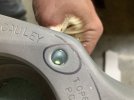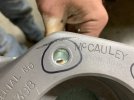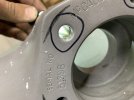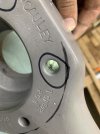In Canadian law we have this:
(b) At intervals of not more than 5 years, the propeller shall be removed from the aircraft and inspected for corrosion or other defects over its entire surface, including the hub faces and the mounting hole bores. While the propeller is removed, it shall also be checked for correct dimensions. However, if defects which require repairs beyond those recommended as field repairs by the propeller manufacturer are found, the propeller shall be repaired by an organization approved for the overhaul of propellers.
The McCauley propeller overhaul and repair manual isn't on the web for free, but it would surely mention this. Transport Canada is not in the habit of making stuff up. I used to use a paper copy of the manual to do the dimensional checks.









 .
.